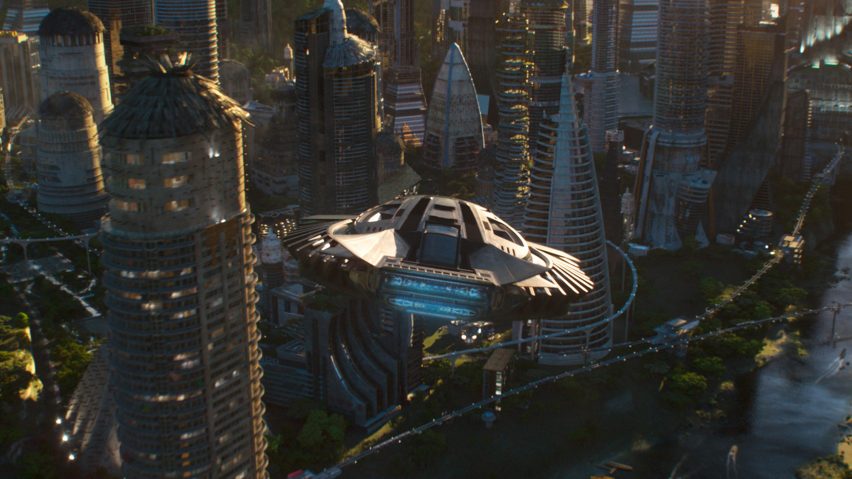To celebrate The 91st Academy Awards, we've chosen five of our favourite set designs from this year's nominees, from the afrofuturist cityscapes of Black Panther's Wakanda to the meticulous detail of Roma.
Black Panther by Hannah Beachler
Production designer Hannah Beachler looked to the architecture of Zaha Hadid, Buckingham Palace and afrofuturism when creating the fictional world of Wakanda for the hit Marvel film Black Panther.
Specific points of reference include the DDP Building in Seoul and the Wangjing SOHO in Beijing combined with lush green landscapes reminiscent of African terrain.
The Favourite by Fiona Crombie
Filmed in England's historic Hatfield House, production designer Fiona Crombie was keen to express the "frivolity and whims of the court" when creating these "grand" yet "stripped back" sets for period drama The Favourite.
The Australian designer, who has already won a BAFTA for her work on the film, played with scale to build each character's role in the film with a giant bed complete with four mattresses for Queen Anne.
Roma by Eugenio Caballero
Set in 1970s Mexico City, production designer Eugenio Caballero used both his and director Alfonso Cuarón's memories of growing up in the Mexican capital when making the immensely detailed sets for black and white drama Roma.
While much of the furniture came from Cuarón's family, Caballero built facades over street buildings to recreate the period, which he based on old photographs.
First Man by Nathan Crowley
Production designer Nathan Crowley was tasked with faking a moon landing in Damian Chazelle's First Man, a biopic that follows Neil Armstrong's quest to walk on the moon.
Crowley worked closely with NASA to accurately depict the space station equipment, space suits and merchandise used in the film, which spans more than a decade in Armstrong's life.
Production designer Paul Harrod took cues from the work of Japanese architect Kenzo Tange when constructing the "hellish and beautiful" architecture of Wes Anderson's stop-motion animation Isle of Dogs.
Each component of the film's staggering 240 sets and 44 stages was constructed in minute detail, ranging from "toxic clouds" made from cotton wool to tiny perspex puddles.

